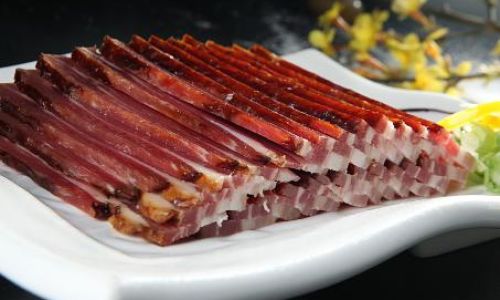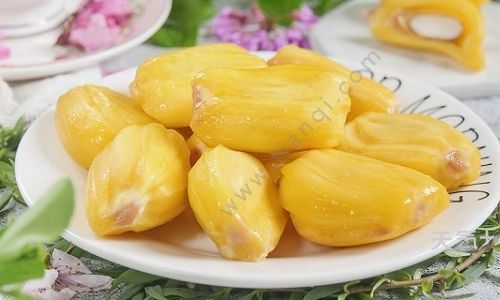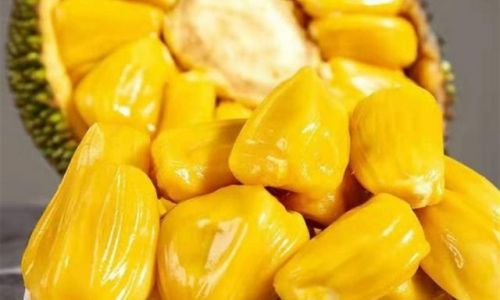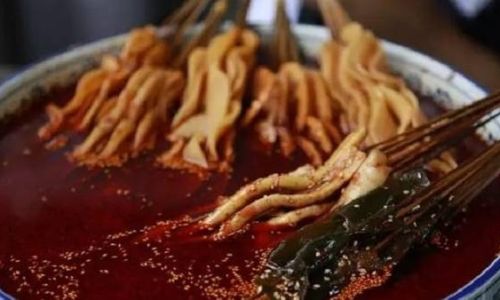Glutinous rice cakes, known as nían gāo in Chinese, mochi in Japanese, and ttok in Korean, are beloved treats across Asian cuisines. These chewy, sticky delights are made from glutinous rice flour, water, and sometimes sugar, resulting in a texture that is both soft and densely pliable. While often enjoyed fresh, especially during festivals like the Lunar New Year, many home cooks and food enthusiasts wonder: Can glutinous rice cakes be frozen to extend their shelf life without compromising quality? This article explores the science behind freezing glutinous rice cakes, provides step-by-step storage guidelines, and offers tips for restoring their texture after thawing.
The Science of Freezing Glutinous Rice Cakes
Glutinous rice cakes derive their unique texture from amylopectin, a starch molecule present in high concentrations in glutinous rice. When cooked, amylopectin absorbs water and forms a gel-like structure, creating the signature soft, stretchy consistency. However, this same structure makes glutinous rice cakes prone to staling and microbial growth when stored at room temperature. Freezing slows down both enzymatic activity and microbial proliferation, effectively preserving the cakes for longer periods. Yet, freezing is not without its challenges. Ice crystals formed during the process can disrupt the starch matrix, leading to texture changes such as increased hardness or dryness upon thawing.
Refrigeration vs. Freezing: Understanding Shelf Life
Before diving into freezing techniques, it’s essential to clarify how glutinous rice cakes fare under different storage conditions:

- At Room Temperature: Fresh glutinous rice cakes last only 1–2 days due to moisture loss and bacterial growth.
- In the Refrigerator: Stored in an airtight container, they may last 5–7 days, but refrigeration accelerates starch retrogradation—a process where starch molecules realign, causing the cakes to harden.
- In the Freezer: Properly frozen, glutinous rice cakes can retain quality for up to 3 months. Beyond this, freezer burn and texture degradation become more pronounced.
Step-by-Step Guide to Freezing Glutinous Rice Cakes
Freezing glutinous rice cakes requires careful preparation to minimize ice crystal formation and preserve texture. Follow these steps:
-
Cool Completely: Allow freshly made or purchased glutinous rice cakes to cool to room temperature. Placing warm cakes in the freezer creates excess moisture, leading to larger ice crystals.
-
Portion Control: Slice the cakes into individual servings. This allows for easier thawing and reduces the need to refreeze unused portions, which can accelerate staling.
-
Wrap Tightly:
- First Layer: Wrap each portion in plastic wrap, pressing out excess air to prevent freezer burn.
- Second Layer: For added protection, wrap again in aluminum foil or place in a freezer-safe resealable bag.
-
Label and Date: Use a waterproof marker to note the contents and freezing date. Glutinous rice cakes are best consumed within 3 months for optimal texture.
-
Store Flat: Lay portions flat in the freezer to prevent deformation. Avoid stacking until fully frozen to prevent squishing.

Thawing and Restoring Texture
Thawing glutinous rice cakes properly is critical to reviving their chewiness. Here’s how:
-
Refrigerator Thawing (Recommended):
- Transfer frozen portions to the refrigerator 8–12 hours before use.
- This slow thawing minimizes moisture loss and textural changes.
-
Quick Thawing (For Immediate Use):
- Submerge sealed packages in cold water, changing the water every 30 minutes until pliable (1–2 hours).
- Avoid microwaving, as uneven heating can create gummy patches.
-
Reheating Methods:
- Steaming: Place thawed cakes in a steamer basket over boiling water for 5–7 minutes. This method best preserves moisture.
- Pan-Frying: Slice thawed cakes and pan-fry in a nonstick skillet with a teaspoon of oil until golden and slightly crispy.
- Oven: Wrap in foil and bake at 350°F (175°C) for 10–15 minutes for a softer texture.
Signs of Spoilage and When to Avoid Freezing
Not all glutinous rice cakes are suitable for freezing. Discard cakes if:
- They emit a sour or fermented odor.
- Mold is visible (freezing does not kill mold spores).
- The texture is excessively dry or crumbly before freezing.
Additionally, avoid freezing cakes filled with perishable ingredients like fresh fruit or custard, as these may separate or spoil during thawing.

Creative Uses for Frozen Glutinous Rice Cakes
Frozen glutinous rice cakes are versatile ingredients beyond direct consumption. Try these ideas:
- Stir-Fries: Slice thawed cakes into bite-sized pieces and toss into savory stir-fries during the last 2 minutes of cooking.
- Desserts: Coat thawed cakes in toasted sesame seeds, shredded coconut, or crushed pistachios for a quick sweet treat.
- Soups: Add cubed cakes to hotpot or sweet red bean soup during the final minutes of simmering.
- Grilled Delights: Skewer thawed cakes and grill until charred, brushing with honey or soy glaze for caramelization.
Common Freezing Mistakes to Avoid
- Skipping Portion Control: Freezing large chunks forces you to thaw more than needed, risking waste.
- Using Improper Packaging: Lightweight plastic wrap alone may not prevent freezer burn. Layer with foil or airtight containers.
- Ignoring Air Pockets: Trapped air accelerates freezer burn. Press out air from bags before sealing.
- Refreezing Thawed Cakes: Each freeze-thaw cycle degrades texture further.
Alternative Preservation Methods
If freezing isn’t an option, consider:
- Vacuum Sealing: Extends refrigerator shelf life by reducing oxygen exposure.
- Dehydrating: Slice cakes thinly and dry in a dehydrator at 135°F (57°C) until crisp. Rehydrate in warm liquid before use.
- Oil Coating: Brush cakes with neutral oil and store in an airtight container to slow staling (lasts 2–3 days).
The Cultural Context of Glutinous Rice Cakes
Glutinous rice cakes hold deep cultural significance. In China, nían gāo symbolizes prosperity and is traditionally eaten during the Lunar New Year. In Japan, mochi is central to New Year’s celebrations, while in Korea, ttok is shared during ancestral rituals. Freezing these cakes allows modern households to honor traditions without compromising quality, bridging cultural heritage with practicality.
Conclusion: Freezing as a Preservation Tool
Freezing glutinous rice cakes is a viable method to extend their shelf life, provided proper techniques are followed. While texture changes are inevitable, strategic thawing and reheating can restore much of their original chewiness. By understanding the science behind freezing and adhering to best practices, home cooks can enjoy these treats year-round, reducing food waste and preserving culinary traditions. Whether sliced into stir-fries, grilled as a snack, or savored in a comforting soup, frozen glutinous rice cakes offer a versatile canvas for culinary creativity.
In an era where sustainability and convenience intersect, mastering the art of freezing glutinous rice cakes empowers both home cooks and food businesses to balance practicality with preservation. So the next time you find yourself with leftover nían gāo or mochi, remember: the freezer is not an enemy but an ally in the quest to savor time-honored flavors.





0 comments